Detailed Info of IX-30003_L3K9124X0C VVT PHASER & OCV
Working Principle and Structure of VVT system
VVT system mainly consists of a cam phaser and an oil control valve (OCV for short). The cam phaser is the actuator of the system, and the OCV is the controller of the system.
The engine management system(also commonly referred to as the ECU) looks up the MAP map based on the signals transmitted by the throttle opening sensor, the engine water temperature sensor, the rotational speed sensor, the air flow meter, etc., and calculates the required valve timing angle under various operating conditions of the engine. The time angle, that is, the target position. At the same time, EMS calculates the actual position of the camshaft based on the feedback signals from the crank position sensor and the cam position sensor. The EMS compares the target position with the actual position and sends an actuation signal to the OCV according to the EMS control strategy to change the position of the spool in the control valve, thereby changing the oil flow direction and flow rate in the oil passage, as well as the signals such as advance, lag, and constant, are fed back into the VVT phaser cavity by hydraulic pressure to realize relative rotation between the inner stator and the outer rotor of the phaser to adjust the timing angle of the camshaft, thereby the amount of intake air (exhaust) is adjusted, and the valve opening and closing time is reached.
The OCV Oil Control Valve Structure of VVT System
The VVT system's OCV valve is a proportional valve, that is, the movement position of the spool is proportional to the PWM duty ratio provided by the ECU of the engine to the OCV coil. When the duty ratio is gradually increased, the electromagnetic force of the coil is gradually increased, the iron core assembly moves in the solenoid, and the valve core is pushed forward against the spring force. When the duty cycle signal is gradually reduced, the electromagnetic force is gradually reduced. The spool gradually returns to its position under the action of the spring force. During the movement of the spool, the valve sleeve cooperates with the valve sleeve to realize the switching of the oil passage, thereby controlling the direction and flow of the oil into and out of the OCV valve, and controlling the flow of oil flowing into or out of the oil chamber of the phaser.











 Wheel Bearing
Wheel Bearing is a set of steel balls or rollers held together by a metal ring called a race. They help wheels spin fast with as little friction as possible. View More
Wheel Bearing
Wheel Bearing is a set of steel balls or rollers held together by a metal ring called a race. They help wheels spin fast with as little friction as possible. View More Wheel Bearing Kits
When you need to change the wheel hub bearing,you also need to replace many other parts at the same time,such as hub nut,bolt,seals,split pin,and so on. View More
Wheel Bearing Kits
When you need to change the wheel hub bearing,you also need to replace many other parts at the same time,such as hub nut,bolt,seals,split pin,and so on. View More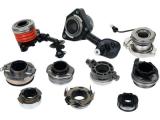 Clutch Release Bearing
Clutch Release Bearing is what presses down on the rotating spring plate or "pressure plate" to release the clutch disk. View More
Clutch Release Bearing
Clutch Release Bearing is what presses down on the rotating spring plate or "pressure plate" to release the clutch disk. View More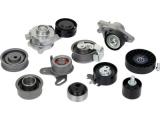 Belt Tensioner
A Drive Belt Tensioner is a pulley mounted to either a spring mechanism or to an adjustable pivot point that is used to keep constant tension on your serpentine belt. View More
Belt Tensioner
A Drive Belt Tensioner is a pulley mounted to either a spring mechanism or to an adjustable pivot point that is used to keep constant tension on your serpentine belt. View More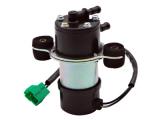 Fuel Pump
AiX provide you with the high quality of electric fuel pump and fuel pump assembly.Fuel pump assembly is one of the vital components of fuel injection system for EFI vehicle. View More
Fuel Pump
AiX provide you with the high quality of electric fuel pump and fuel pump assembly.Fuel pump assembly is one of the vital components of fuel injection system for EFI vehicle. View More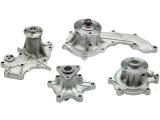 Water Pump
The reliable and effective operation of an automobile engine requires the cooperation of many parts. View More
Water Pump
The reliable and effective operation of an automobile engine requires the cooperation of many parts. View More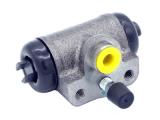 Wheel Brake Cylinder
When you want your car to slow down or stop, you need to take the brake operation. At this point, you need to step down your brake pedal. View More
Wheel Brake Cylinder
When you want your car to slow down or stop, you need to take the brake operation. At this point, you need to step down your brake pedal. View More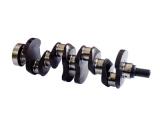 Crankshaft
Crankshaft is also known as crank.It is the important part of an engine to convert the up and down motion of the pistons into horizontal rotation.It is usually made by cast iron or forged steel. View More
Crankshaft
Crankshaft is also known as crank.It is the important part of an engine to convert the up and down motion of the pistons into horizontal rotation.It is usually made by cast iron or forged steel. View More VVT PHASER & OCV
VVT is the abbreviation of Variable Valve Timing. VVT PHASER is the vital component for the VVT engines. View More
VVT PHASER & OCV
VVT is the abbreviation of Variable Valve Timing. VVT PHASER is the vital component for the VVT engines. View More

















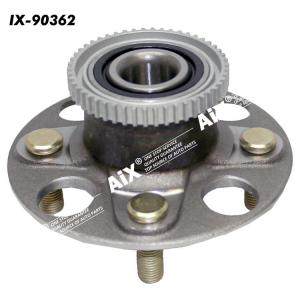

 +86-18758057736
+86-18758057736 
 TEAM 21,XIEJIA VILLAGE, PUYANG TOWN, XIAOSHAN DISTRICT, Hangzhou, Zhejiang Province, China
TEAM 21,XIEJIA VILLAGE, PUYANG TOWN, XIAOSHAN DISTRICT, Hangzhou, Zhejiang Province, China 